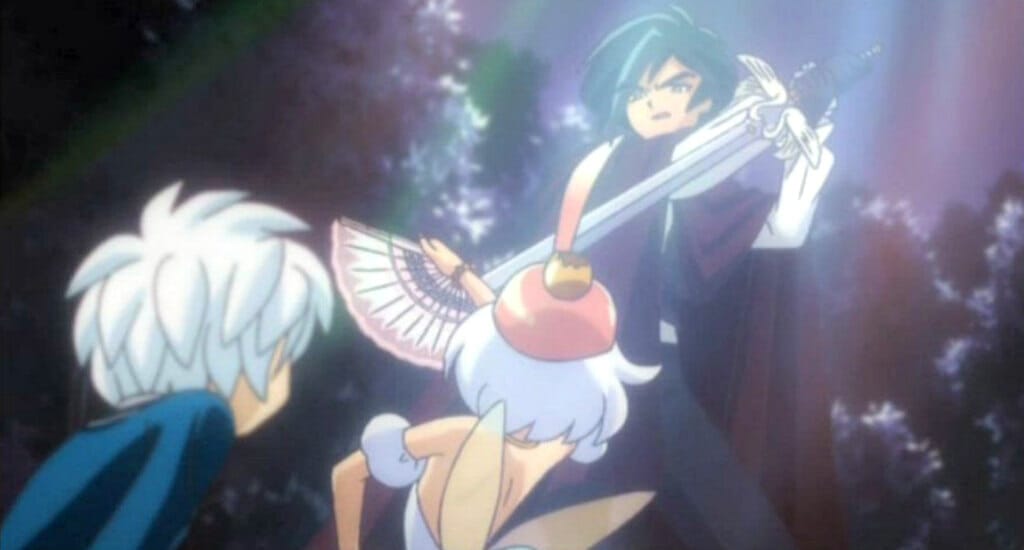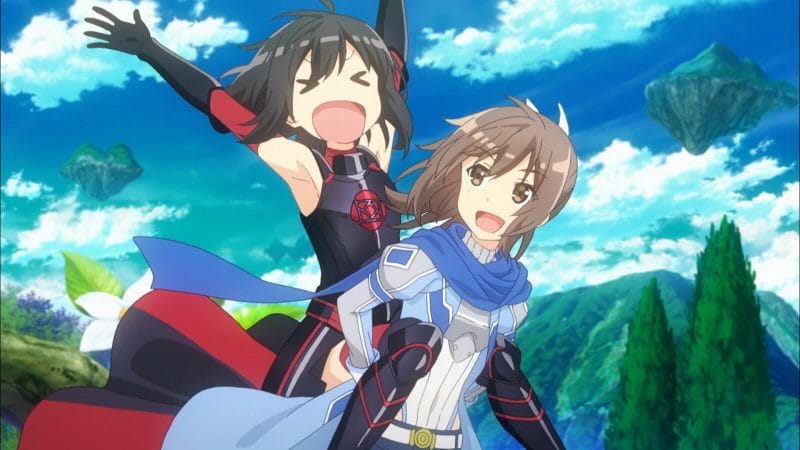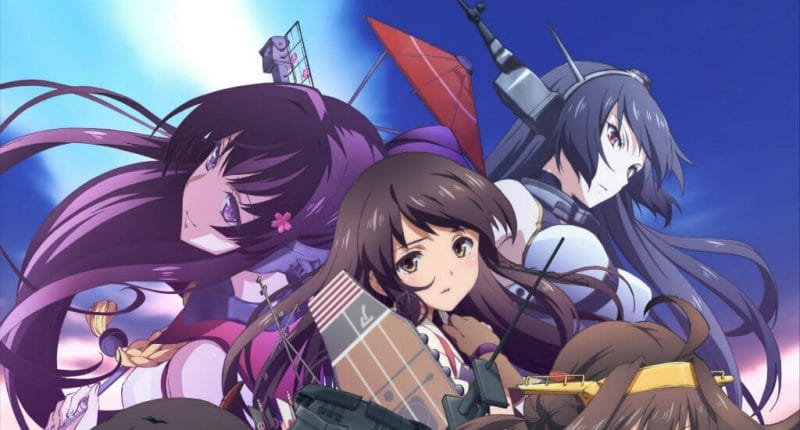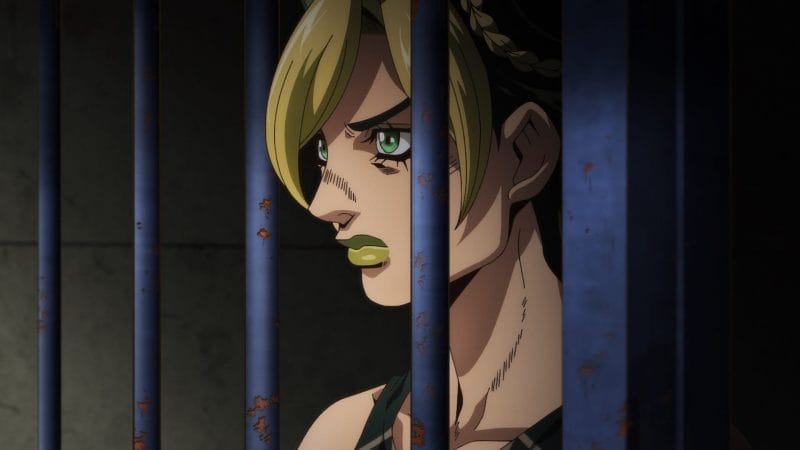[et_pb_section fb_built=”1″ _builder_version=”3.23.3″][et_pb_row _builder_version=”3.24.1″ collapsed=”off”][et_pb_column type=”4_4″ _builder_version=”3.24.1″][et_pb_text _builder_version=”3.24.1″]
Part 1 of a two-part series. The second part was published on June 15, 2019.
[/et_pb_text][/et_pb_column][/et_pb_row][et_pb_row _builder_version=”3.23.3″ collapsed=”on”][et_pb_column type=”4_4″ _builder_version=”3.23.3″][et_pb_text admin_label=”Text – Intro” _builder_version=”3.23.3″]
“Melodrama” has been considered a dirty word for a long while now in western fan circles. As tastes have shifted toward appreciating subtle storytelling and theme work, high emotion works have come to be widely regarded as dim-witted or paper thin. All flash and no substance, as they say. I’ve seen people criticize Attack on Titan because it played an emotional song to enhance a scene, arguing this was poor storytelling due to its use of loud music to convey an emotion. Looking at the most popular works of the past decade, though, paints a very different picture, especially in the worlds of anime and manga. Powerhouses like One Piece, Kill la Kill, and My Hero Academia all make use of melodramatic storytelling techniques, and they’re not alone. While all of these titles have been criticized on some level, it’s rare to see them criticized for those traits of melodrama, despite those same characteristics being used to lambaste other series just a few years ago.
[/et_pb_text][/et_pb_column][/et_pb_row][et_pb_row _builder_version=”3.23.3″ collapsed=”on”][et_pb_column type=”3_4″ _builder_version=”3.23.3″][et_pb_text admin_label=”Text – P.A. Part 1″ _builder_version=”3.23.3″]To understand this growing shift, it’s important to understand how melodrama works. P.A, or Private Actress, is a 90s josei manga series about Shiho Kobayakawa, an actress who takes jobs off the screen or stage, pretending to be real people in the real world for one reason or another. The series is filled with melodrama tropes, whether the focus be on helping an old man pass on peacefully, or tracking down a possible serial killer (yes, really). It’s all expressed through Shiho’s method and inner thoughts, expressing an emotional logic that she’s trying to decipher with every person she meets. Emotional logic is the core of melodrama’s function and appeal, keeping characters fairly simple and easy to understand in order to push various thematic concepts or keep the flow of a story easy to follow, even if the cast is large. This makes it easier to create an engaging plot with twists and turns, since there’s less of a chance that a sudden turn will confuse with such simple set-ups.[/et_pb_text][/et_pb_column][et_pb_column type=”1_4″ _builder_version=”3.23.3″][et_pb_image src=”https://www.animeherald.com/wp-content/uploads/2019/06/Private-Actress-manga-Volume-1-Cover-001-20190604.jpg” align=”center” _builder_version=”3.23.3″][/et_pb_image][/et_pb_column][/et_pb_row][et_pb_row _builder_version=”3.23.3″ collapsed=”on”][et_pb_column type=”4_4″ _builder_version=”3.23.3″][et_pb_text admin_label=”Text – P.A. Part 2″ _builder_version=”3.23.3″]P.A. even pushes into mind game territory, especially in a late-series confrontation with a major recurring antagonist. She’s a character presented as Shiho’s evil reflection, and their final confrontation is decided entirely on one another’s ability to manipulate each other. Everything is decided by emotion. A lot of josei and shojo dramas are written like this, taking mundane settings or subject matter and using outlandish scenarios within them to create excitement. Their success isn’t due to subtle storytelling, but their ability to take this emotionally loud style of writing and properly wield it to keep the reader interested in all the character relationships and dynamics. It’s all pulp drama 101, but some works have different aims.[/et_pb_text][/et_pb_column][/et_pb_row][et_pb_row _builder_version=”3.23.3″ collapsed=”on”][et_pb_column type=”4_4″ _builder_version=”3.23.3″][et_pb_image src=”https://www.animeherald.com/wp-content/uploads/2019/06/Princess-Tutu-Still-001-20190604.jpg” align=”center” admin_label=”Image – Princess Tutu” _builder_version=”3.23.3″][/et_pb_image][et_pb_text admin_label=”Text – Princess Tutu Caption” _builder_version=”3.23.3″]
Princess Tutu
[/et_pb_text][et_pb_text admin_label=”Text – Princess Tutu” _builder_version=”3.23.3″]
2002’s Princess Tutu is a fantastic example of how to dig greater meaning from stories focused almost entirely on the emotional viewpoints of the characters. The series is creative in how it allows the characters to express themselves, using both dialog and dancing as methods of communication and even debate. Everything runs on fairy tale logic, going in whatever direction better serves the story. The characters are also written this way, fitting into various archetypes, with main character Duck trying to become the heroine in a story she doesn’t seem to belong to. Eventually, the series tips its hand and reveals a more complex narrative about storybook characters trapped by the words of a writer. It’s here, where Princess Tutu changes melodrama from something straightforward to a way to ground a more complex and meta story. Melodrama becomes central to the series’ heart and impact, refusing to let the larger themes at work steal the show entirely. This results in a strong balance of thoughtful ideas and character engagement that makes the ending incredibly satisfying.
Melodrama can even be used to take sub-par material and make it entertaining. You can look at the late ‘00s anime adaptation of the ‘80s manga Hanasakeru Seishounen for a great example of this. A truly bizarre series, it comes with a baffling set-up of an oil baron setting his daughter up with a handful of possible husbands before shifting into a political thriller about the control of one of the most oil-rich nations in the world. The actual events in it continue to get stranger and stranger as time goes on, starting with a first arc where suicidal depression is cured by shooting a mirror. This is quickly followed by the tale of a prince and an heiress who were raised on a secluded tropical island trying to avoid political assassins with help of Hong Kong street kids who work for a local Triad group. The thematic meat is barely there, but the events portrayed make up for it and turn the work into unexpectedly addictive junk food.
[/et_pb_text][/et_pb_column][/et_pb_row][et_pb_row _builder_version=”3.23.3″ collapsed=”off” admin_label=”Row”][et_pb_column type=”4_4″ _builder_version=”3.23.3″][et_pb_image src=”https://www.animeherald.com/wp-content/uploads/2019/06/Hanasakeru-Seishounen-Anime-Still-001-20190604.jpg” admin_label=”Image – Hanasakeru Seishounen” _builder_version=”3.23.3″][/et_pb_image][et_pb_text admin_label=”Caption – Hanasakeru Seishounen” _builder_version=”3.23.3″]
Hanasakeru Seishounen
[/et_pb_text][et_pb_text admin_label=”Text – Finale” _builder_version=”3.23.3″]The series works because the melodrama never stops. Everyone is constantly at an emotional high, usually brimming with anger or sadness, and the frantic plot keeps the reader guessing as to what wild thing is going to happen next. The simple characters fit well with this style, and it’s easy to nail down their desires and motivations. This makes the experience all the more intriguing when one can’t quite pin someone down. High energy and constant action mixes well with the character writing on display, making up for a lack of complexity among much of the main cast by simply making readers want to see what happens to them and their various bonds. Their personalities, meanwhile, are defined just enough to make them likable or engaging.
A well-made melodrama cares more about the emotional states of the characters than more mechanical plotting styles. It allows this emotion to decide mainly how a story flows, or uses those sentiments to become the core for a thrilling structure. Melodrama is a writing tool that can be used to great or poor effect, like any writing style or technique. The fact it’s so heavily focused on strong emotions, though, is what has given it a stigma. You can thank the patriarchy partly for that, as a major western sign of femininity is being emotional. It’s something that a “real man” is supposed to avoid, lest he show weakness. This radiates in the social background, and appears in all sorts of strange ways, with the backlash against melodramas popular in the west (mainly romance movies and soap operas) being a major example of this. Gender divides in marketing already in-place for so much anime and manga that reached our shores only helped to enforce these divides, but things have slowly been changing for the better.
The fact that a major player in destroying that divide was notoriously sexist writer Tsugumi Ohba of Death Note fame remains a bizarre cosmic joke. Next time, we’ll see how Ohba’s idea of a “non-battle battle manga” changed Weekly Shonen Jump, and how two mecha anime smash hits used long established genre formulas, taken to the max, to smuggle melodramatic storytelling on a massive male audience.[/et_pb_text][et_pb_cta title=”Support Anime Herald on Patreon” button_url=”https://www.patreon.com/bePatron?u=8646351″ url_new_window=”on” button_text=”Become a Patron” admin_label=”Call To Action – Patreon” _builder_version=”3.19″ background_color=”#222c35″ custom_button=”on” button_bg_color=”#f96854″ global_module=”59498″ saved_tabs=”all” button_text_size__hover_enabled=”off” button_text_size__hover=”null” button_one_text_size__hover_enabled=”off” button_one_text_size__hover=”null” button_two_text_size__hover_enabled=”off” button_two_text_size__hover=”null” button_text_color__hover_enabled=”off” button_text_color__hover=”null” button_one_text_color__hover_enabled=”off” button_one_text_color__hover=”null” button_two_text_color__hover_enabled=”off” button_two_text_color__hover=”null” button_border_width__hover_enabled=”off” button_border_width__hover=”null” button_one_border_width__hover_enabled=”off” button_one_border_width__hover=”null” button_two_border_width__hover_enabled=”off” button_two_border_width__hover=”null” button_border_color__hover_enabled=”off” button_border_color__hover=”null” button_one_border_color__hover_enabled=”off” button_one_border_color__hover=”null” button_two_border_color__hover_enabled=”off” button_two_border_color__hover=”null” button_border_radius__hover_enabled=”off” button_border_radius__hover=”null” button_one_border_radius__hover_enabled=”off” button_one_border_radius__hover=”null” button_two_border_radius__hover_enabled=”off” button_two_border_radius__hover=”null” button_letter_spacing__hover_enabled=”off” button_letter_spacing__hover=”null” button_one_letter_spacing__hover_enabled=”off” button_one_letter_spacing__hover=”null” button_two_letter_spacing__hover_enabled=”off” button_two_letter_spacing__hover=”null” button_bg_color__hover_enabled=”off” button_bg_color__hover=”null” button_one_bg_color__hover_enabled=”off” button_one_bg_color__hover=”null” button_two_bg_color__hover_enabled=”off” button_two_bg_color__hover=”null”]
This article is only possible thanks to our amazing Patrons. It’s through their help that we’re able to offer a high-quality publication that’s ad-free and free to access.
Consider backing us on Patreon for as little as $1 a month, to support new content from our amazing team, and ensure that we can keep talking nerdy to you for some time to come.
[/et_pb_cta][/et_pb_column][/et_pb_row][/et_pb_section]












